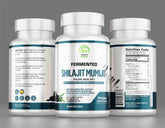Adverse Event Reporting
Adverse Reactions to Supplements: How Reporting Protects You
The dietary supplement industry has seen substantial growth over the past few decades, with a wide array of products available to consumers seeking to enhance their health and wellness. From vitamins and minerals to herbal extracts and probiotics, dietary supplements offer various benefits. However, with the increasing consumption of these products, the importance of monitoring their safety cannot be overstated. Adverse event reporting (AER) plays a critical role in safeguarding consumer health by identifying and addressing potential risks associated with dietary supplements.
Understanding Adverse Events in Dietary Supplements
An adverse event (AE) is any undesirable experience associated with the use of a dietary supplement. This can range from mild side effects, such as headaches or digestive issues, to severe reactions, including allergic reactions or life-threatening conditions. Adverse events can be categorized into several types:
- Mild Adverse Events: These are minor issues that do not significantly affect the user's health, such as mild gastrointestinal discomfort or minor skin rashes.
- Moderate Adverse Events: These events cause more significant discomfort or health issues that may require medical attention, such as severe headaches or gastrointestinal distress.
- Severe Adverse Events: These are serious health issues that can be life-threatening or result in hospitalization, such as severe allergic reactions or liver damage.
- Unexpected Adverse Events: These are adverse events that are not listed on the product's labeling or are not consistent with the known effects of the supplement.
Understanding the nature and severity of adverse events is crucial for effective monitoring and response. By systematically reporting and analyzing these events, manufacturers and healthcare professionals can identify potential safety concerns and take appropriate actions to mitigate risks.
The Importance of Adverse Event Reporting
Adverse event reporting is a critical component of post-market surveillance for dietary supplements. It serves several essential functions in safeguarding consumer health:
Monitoring Safety
Adverse event reporting helps in the ongoing monitoring of the safety of dietary supplements after they have been introduced to the market. This is particularly important because clinical trials for dietary supplements are often less rigorous than those for pharmaceuticals. Continuous monitoring through adverse event reporting helps identify safety issues that may not have been apparent during pre-market testing.
Identifying Trends
By collecting and analyzing adverse event reports, manufacturers and regulatory authorities can identify trends and patterns that may indicate a widespread issue with a particular supplement. For example, if multiple reports of liver damage are associated with a specific herbal supplement, this could signal a significant safety concern that requires further investigation.
Informing Consumers and Healthcare Professionals
Adverse event reporting provides valuable information to consumers and healthcare professionals about the potential risks associated with dietary supplements. This information can help consumers make informed choices and healthcare professionals to advise their patients appropriately.
Enhancing Product Safety
The ultimate goal of adverse event reporting is to enhance the safety of dietary supplements. By identifying and addressing safety concerns, manufacturers can make necessary changes to formulations, dosages, or usage instructions to mitigate risks. This continuous improvement process helps ensure that dietary supplements remain safe for consumer use.
Key Components of an Effective Adverse Event Reporting System
An effective adverse event reporting system is essential for identifying and addressing safety concerns related to dietary supplements. Several key components contribute to the effectiveness of such a system:
1. Comprehensive Reporting Mechanisms
A robust adverse event reporting system should have multiple mechanisms for collecting reports from various sources, including consumers, healthcare professionals, and manufacturers. This can include online reporting forms, telephone hotlines, and mobile applications. The easier it is for individuals to report adverse events, the more likely they are to do so.
2. Clear Guidelines and Instructions
Clear guidelines and instructions on how to report adverse events are essential for ensuring that the information collected is accurate and comprehensive. This includes providing details on what constitutes an adverse event, what information should be included in the report, and how to submit the report.
3. Efficient Data Collection and Management
Efficient data collection and management systems are crucial for handling the large volumes of data generated by adverse event reports. This includes databases for storing reports, software for analyzing data, and protocols for ensuring data privacy and security.
4. Prompt and Thorough Investigation
Prompt and thorough investigation of adverse event reports is essential for identifying the root cause of the issue and determining the appropriate response. This can involve reviewing the product formulation, conducting laboratory tests, and consulting with medical experts.
5. Effective Communication and Response
Effective communication and response mechanisms are critical for addressing safety concerns and informing stakeholders about the actions being taken. This includes communicating with consumers, healthcare professionals, and regulatory authorities about the findings and any changes made to the product or its usage instructions.
6. Continuous Monitoring and Improvement
Adverse event reporting should be part of a continuous monitoring and improvement process. Regular reviews of adverse event data, combined with proactive measures to enhance product safety, help ensure that dietary supplements remain safe for consumer use.
Sources of Adverse Event Reports
Adverse event reports can come from a variety of sources, each providing valuable information for monitoring the safety of dietary supplements:
Consumers
Consumers are often the first to experience and report adverse events associated with dietary supplements. They can provide firsthand accounts of their experiences, including details about the product used, the dosage taken, and the symptoms experienced. Encouraging consumers to report adverse events and providing easy-to-use reporting mechanisms are essential for collecting accurate and comprehensive data.
Healthcare Professionals
Healthcare professionals, including doctors, nurses, and pharmacists, play a critical role in identifying and reporting adverse events. They have the expertise to recognize potential adverse reactions and provide detailed clinical information that can aid in the investigation. Educating healthcare professionals about the importance of reporting adverse events and how to do so is crucial for effective monitoring.
Manufacturers
Manufacturers are responsible for monitoring the safety of their products and reporting any adverse events they become aware of. This includes reports from consumers, healthcare professionals, and internal quality control processes. Manufacturers must have robust systems in place for collecting and investigating adverse event reports and for communicating their findings to regulatory authorities and the public.
Literature and Research Studies
Adverse events can also be identified through literature reviews and research studies. Published case reports, clinical studies, and reviews of scientific literature can provide valuable information about potential safety concerns. Regularly monitoring the scientific literature for new information about the safety of dietary supplements is an important part of post-market surveillance.
Social Media and Online Forums
Social media platforms and online forums can be valuable sources of information about adverse events. Consumers often share their experiences with dietary supplements on these platforms, providing real-time data about potential safety concerns. Monitoring social media and online forums can help identify emerging issues and trends that may require further investigation.
Steps in the Adverse Event Reporting Process
The adverse event reporting process involves several steps, each of which is crucial for ensuring that safety concerns are identified and addressed promptly and effectively:
1. Reporting the Adverse Event
The first step in the process is the actual reporting of the adverse event. This can be done by consumers, healthcare professionals, or manufacturers through various reporting mechanisms, such as online forms, telephone hotlines, or mobile applications. The report should include detailed information about the adverse event, including the product involved, the dosage taken, the symptoms experienced, and any other relevant information.
2. Data Collection and Management
Once the adverse event report is received, the data must be collected and managed efficiently. This involves entering the information into a database, ensuring that all necessary details are captured, and maintaining the confidentiality and security of the data. Effective data management systems are essential for handling the large volumes of data generated by adverse event reports.
3. Initial Assessment and Triage
The next step is the initial assessment and triage of the adverse event report. This involves evaluating the severity and urgency of the event and determining the appropriate response. Severe or life-threatening events may require immediate investigation and action, while less severe events may be monitored for trends and patterns.
4. Investigation and Analysis
Thorough investigation and analysis of adverse event reports are critical for identifying the root cause of the issue and determining the appropriate response. This can involve reviewing the product formulation, conducting laboratory tests, consulting with medical experts, and analyzing data from other adverse event reports. The goal is to determine whether the adverse event is related to the product and, if so, what actions can be taken to mitigate the risk.
5. Communication and Response
Effective communication and response mechanisms are essential for addressing safety concerns and informing stakeholders about the actions being taken. This includes communicating with consumers, healthcare professionals, and regulatory authorities about the findings and any changes made to the product or its usage instructions. Transparent and timely communication helps build trust and ensures that stakeholders are informed about potential risks and safety measures.
6. Continuous Monitoring and Improvement
Adverse event reporting should be part of a continuous monitoring and improvement process. Regular reviews of adverse event data, combined with proactive measures to enhance product safety, help ensure that dietary supplements remain safe for consumer use. This includes updating product formulations, revising usage instructions, and implementing additional safety measures as needed.
Challenges in Adverse Event Reporting
While adverse event reporting is crucial for safeguarding consumer health, it also presents several challenges that must be addressed to ensure its effectiveness:
Underreporting
One of the most significant challenges in adverse event reporting is underreporting. Many consumers and healthcare professionals may not report adverse events due to a lack of awareness, perceived inconvenience, or the belief that the event is not serious enough to report. Underreporting can lead to incomplete data and hinder the ability to identify and address safety concerns.
Incomplete or Inaccurate Reports
Incomplete or inaccurate reports can also pose a challenge in adverse event reporting. Reports that lack essential details, such as the product involved, the dosage taken, or the symptoms experienced, can be difficult to investigate and analyze. Ensuring that reports are complete and accurate is critical for effective monitoring and response.
Data Management and Analysis
Managing and analyzing the large volumes of data generated by adverse event reports can be challenging. Effective data management systems are essential for ensuring that data is collected, stored, and analyzed efficiently. This includes maintaining data privacy and security, as well as using advanced data analysis tools to identify trends and patterns.
Distinguishing Causality
Determining whether an adverse event is causally related to a dietary supplement can be challenging. Many factors can contribute to adverse events, including underlying health conditions, concurrent use of other medications or supplements, and individual differences in response to the product. Thorough investigation and analysis are required to distinguish causality and determine the appropriate response.
Timely Response
Timely response to adverse event reports is critical for addressing safety concerns and protecting consumer health. Delays in investigating and responding to reports can result in ongoing risks and potential harm to consumers. Ensuring that adverse event reports are promptly and thoroughly investigated is essential for effective monitoring and response.
Best Practices for Effective Adverse Event Reporting
Implementing best practices for adverse event reporting can help address these challenges and ensure that the reporting system is effective in safeguarding consumer health. Here are some best practices for effective adverse event reporting:
1. Promote Awareness and Education
Promoting awareness and education about the importance of adverse event reporting is essential for encouraging consumers and healthcare professionals to report adverse events. This can include educational campaigns, training programs, and informational materials that explain what constitutes an adverse event, how to report it, and why reporting is important.
2. Simplify Reporting Processes
Simplifying the reporting process can help encourage more individuals to report adverse events. This can include providing easy-to-use online reporting forms, mobile applications, and telephone hotlines. Ensuring that reporting mechanisms are accessible and user-friendly can help increase the number and quality of reports received.
3. Ensure Comprehensive Data Collection
Ensuring that adverse event reports are complete and accurate is essential for effective investigation and analysis. This can include providing clear guidelines and instructions on what information should be included in the report and conducting follow-up with reporters to obtain additional details if needed.
4. Implement Robust Data Management Systems
Implementing robust data management systems is critical for handling the large volumes of data generated by adverse event reports. This includes databases for storing reports, software for analyzing data, and protocols for ensuring data privacy and security. Advanced data analysis tools can help identify trends and patterns that may indicate safety concerns.
5. Conduct Thorough Investigations
Conducting thorough investigations of adverse event reports is essential for identifying the root cause of the issue and determining the appropriate response. This can involve reviewing the product formulation, conducting laboratory tests, consulting with medical experts, and analyzing data from other adverse event reports. The goal is to determine whether the adverse event is related to the product and, if so, what actions can be taken to mitigate the risk.
6. Communicate Findings and Actions
Effective communication and response mechanisms are critical for addressing safety concerns and informing stakeholders about the actions being taken. This includes communicating with consumers, healthcare professionals, and regulatory authorities about the findings and any changes made to the product or its usage instructions. Transparent and timely communication helps build trust and ensures that stakeholders are informed about potential risks and safety measures.
7. Foster a Culture of Continuous Improvement
Adverse event reporting should be part of a continuous monitoring and improvement process. Regular reviews of adverse event data, combined with proactive measures to enhance product safety, help ensure that dietary supplements remain safe for consumer use. This includes updating product formulations, revising usage instructions, and implementing additional safety measures as needed.
8. Utilize Technology and Innovation
Leveraging technology and innovation can enhance the effectiveness of adverse event reporting. This includes using digital reporting platforms, mobile applications, and advanced data analysis tools to streamline the reporting process and improve data management and analysis. Innovative approaches, such as social media monitoring and artificial intelligence, can also provide valuable insights into potential safety concerns.
The Role of Stakeholders in Adverse Event Reporting
Effective adverse event reporting requires collaboration and coordination among various stakeholders, including consumers, healthcare professionals, manufacturers, and regulatory authorities. Each stakeholder plays a critical role in ensuring the safety of dietary supplements:
Consumers
Consumers are at the forefront of adverse event reporting, as they are the ones who experience the effects of dietary supplements firsthand. Encouraging consumers to report adverse events and providing easy-to-use reporting mechanisms are essential for collecting accurate and comprehensive data. Educating consumers about the importance of reporting adverse events and how to do so can help increase the number and quality of reports received.
Healthcare Professionals
Healthcare professionals play a critical role in identifying and reporting adverse events. They have the expertise to recognize potential adverse reactions and provide detailed clinical information that can aid in the investigation. Educating healthcare professionals about the importance of reporting adverse events and how to do so is crucial for effective monitoring.
Manufacturers
Manufacturers are responsible for monitoring the safety of their products and reporting any adverse events they become aware of. This includes reports from consumers, healthcare professionals, and internal quality control processes. Manufacturers must have robust systems in place for collecting and investigating adverse event reports and for communicating their findings to regulatory authorities and the public.
Regulatory Authorities
Regulatory authorities play a key role in overseeing the adverse event reporting system and ensuring that manufacturers comply with reporting requirements. They collect and analyze adverse event reports, conduct investigations, and take appropriate actions to protect consumer health. Regulatory authorities also provide guidance and support to stakeholders involved in adverse event reporting.
Researchers and Scientists
Researchers and scientists contribute to the understanding of adverse events by conducting studies and analyzing data related to dietary supplements. Their work helps identify potential safety concerns, understand the mechanisms behind adverse reactions, and develop strategies to mitigate risks. Collaborating with researchers and scientists can provide valuable insights and enhance the effectiveness of adverse event reporting.
Industry Associations
Industry associations play a supportive role in promoting best practices for adverse event reporting and providing resources and guidance to their members. They can help raise awareness, offer training programs, and facilitate collaboration among stakeholders. Industry associations also advocate for policies and regulations that promote the safety and efficacy of dietary supplements.
Conclusion
Adverse event reporting is a critical component of post-market surveillance for dietary supplements. It serves as an essential tool for monitoring safety, identifying trends, informing consumers and healthcare professionals, and enhancing product safety. By implementing effective adverse event reporting systems, promoting awareness and education, simplifying reporting processes, ensuring comprehensive data collection, conducting thorough investigations, communicating findings and actions, fostering a culture of continuous improvement, and utilizing technology and innovation, the dietary supplement industry can safeguard consumer health and maintain trust in their products.
Collaboration and coordination among stakeholders, including consumers, healthcare professionals, manufacturers, regulatory authorities, researchers, and industry associations, are vital for the success of adverse event reporting. Each stakeholder plays a critical role in ensuring the safety of dietary supplements and contributing to the overall health and well-being of consumers.
Ultimately, effective adverse event reporting is not just about compliance; it is about protecting the health and safety of consumers. By prioritizing adverse event reporting and taking proactive measures to address safety concerns, the dietary supplement industry can continue to provide high-quality products that support health and wellness.
- Choosing a selection results in a full page refresh.








